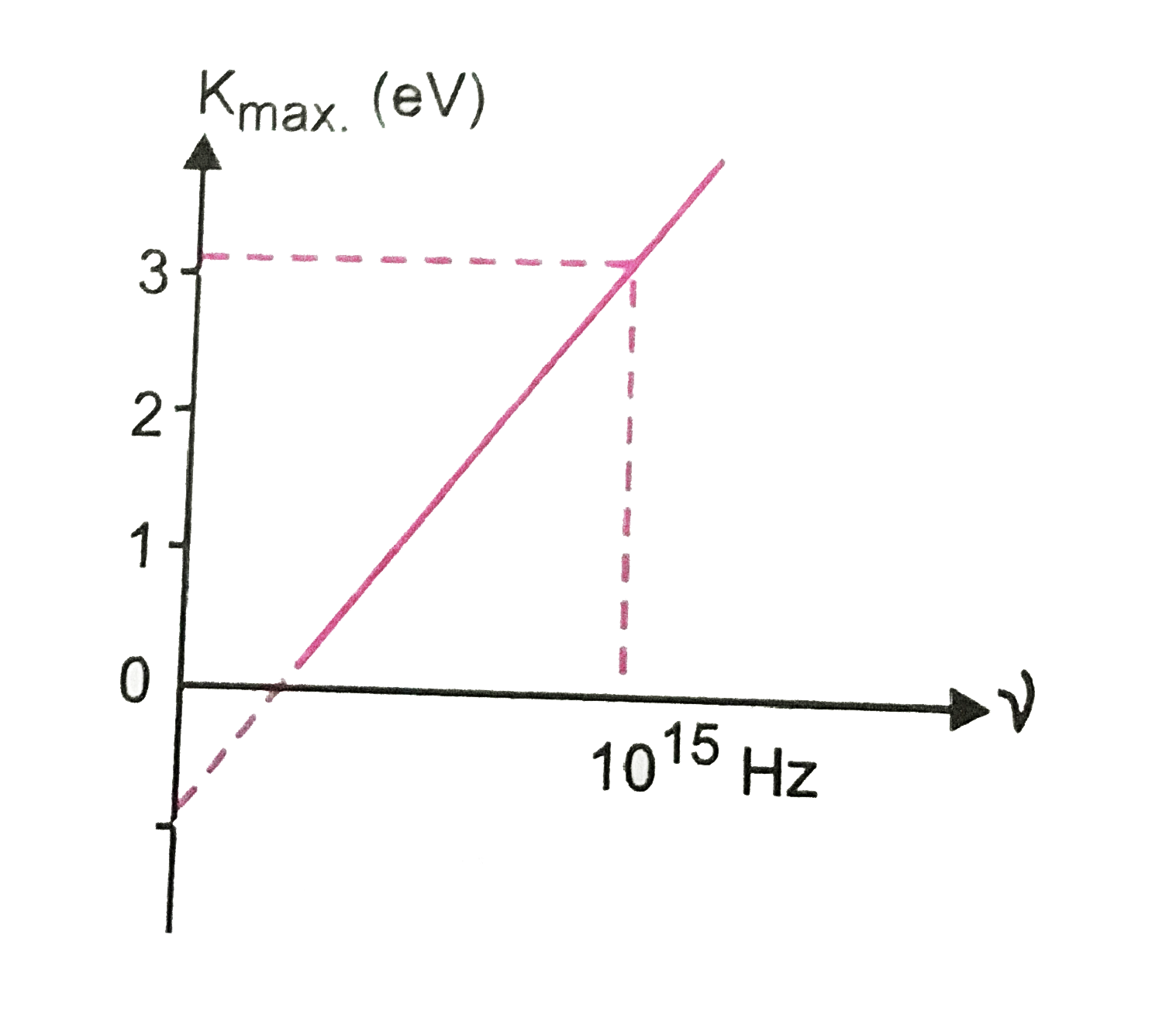Photoelectric Emission
Laws of photoelectric emission :
1. Photoelectric emission takes place from a metal surface, when frequency of incident light is above its threshold frequency.
2. The photoelectric emission starts as soon as the light is incident on the metal surface.
3. The maximum kinetic energy with which an electron is emitted from a metal surface is independent of the intensity of the light and depends upon its frequency.
4. The number of photoelectrons emitted is independent of the frequency of the incident light and depends only upon its intensity.
Similar Questions
Light strikes a sodium surface, causing photoelectric emission. The stopping potential for the ejected electrons is 5.0 V, and the work function of sodium is 2.2 eV. What is the wavelength of the incident light?
View SolutionFind the frequency of light which ejects electrons from a metal surface stopped by a retarding potential of 3.3 V. if photoelectric emission begins in this metal at a frequency of 8×1014Hz, calculate the work function (in eV) for this metal.
View Solution
Knowledge Check
- Question 1 - Select One
If the wavelength of light in an experiment on photoelectric effect is doubled,
(i) the photoelectric emission will not take place
(ii) the photoelectric emission may or may not take place
(iii) the stopping potential will increase
(iv) the stopping potential will decreaseA(i),(ii)B(ii),(iii)C(i),(iv)D(ii),(iv) - Question 2 - Select One
Assertion : In the process of photoelectric emission , all the emitted photoelectrons have the same kinetic energy.
Reason : The photon transfers its whole energy to the electron of the atom in photoelectric effect.AIf both assertion and reason are true and the reason is the correct explanation explanation of assertion.BIf both assertion and reason are true but reason is not the correct explanation of assertion.CIf assertion is true but reason is false.DIf assertion is false but reason is true. - Question 3 - Select One
monochromatic light of wavelength λ , then stopping potential is 3Vs When same surface is illuminated by light of wavelength 2λ , then stopping potential becomes Vs. The value of threshold wavelength for photoelectric emission will be
A4λB8λC4λ/3D6λ
Two monochromatic radiations, blue and vilet, of the same intensity, are incident on a photosensitive surface and cause photoelectric emission. Would (i) the number of electrons emitted per second and (ii) the maximum kinetic energy of the electrons, be equal in the two cases ? Justify your answer.
View SolutionPlot a graph showing variation of stopping potential (V0) with the frequency (v) of the incident radiation for a given photosensitive material. Hence, state the significance of the threshold frequency in photoelectric emission.
Using the principle of energy conservation, write the equation relating the energy of incident photon, threshold frequency and the maximum kinetic energy of the emitted photoelectrons.View SolutionThe work function of a metal is 2,5×(10−19)J. (a) Find the threshold frequency for photoelectric emission. (b) If the metal is exposed to a light beam of frequency (6.0×1014) Hz, what will be the stopping potential ?
View Solutionrepresents a graph of most energetic photoelectrons Kmax(in eV) and frequency v for a metal used as cathod in photoelectrons experiment. The threshold frequency of light for the photoelectric emission from the metal is
 View Solution
View SolutionFor photoelectric emission from certain metal the cut - off frequency is v. If radiation of frequency 2v impinges on the metal plate , the maximum possible velocity of the emitted electron will be (m is the electron mass).
View Solution

